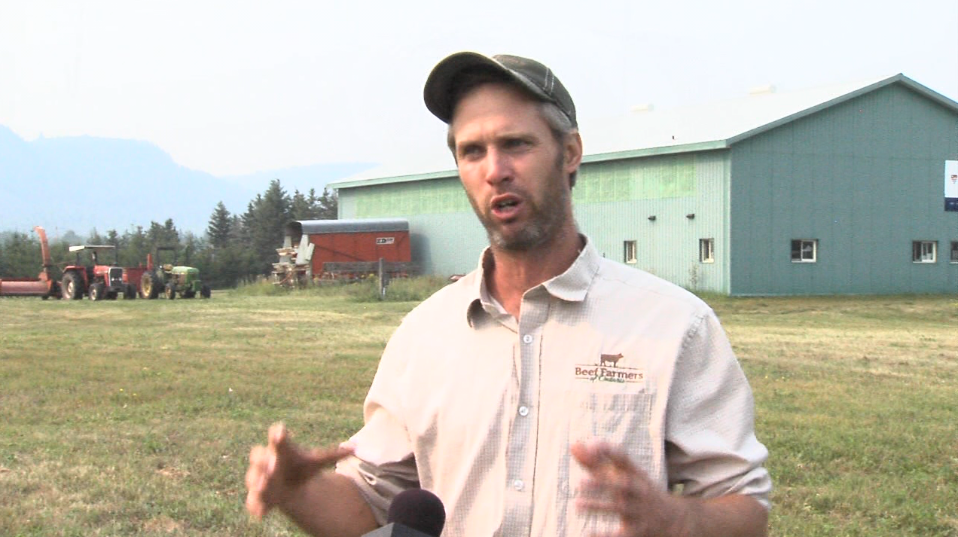THUNDER BAY — On a day when the Lakehead University Agricultural Research Station hosted a tour to demonstrate its success with new crop varieties, farmers like Jason Reid were looking to the sky hoping for rain.
Thunder Bay received less than 20 per cent of its normal rainfall in July.
"If we don't have significant rainfall in the next couple weeks, in the next few days really, it's starting to look dire," said Reid, an at-large member of the board of the Beef Federation of Ontario.
In an interview Tuesday, he said "We're right in the middle of a pretty severe drought...We had a really good start to the spring, kind of cold and damp, really got our crops going in Thunder Bay, but virtually no rainfall since then."
Up until now, Reid said, the growing season has been good in this area, however there's no regrowth in pastures.
"There's been good growth on our pastures as we're rotating through, but now we're going into second and third rotations, and there's nothing there."
He explained that cattle are normally able to graze until the snow comes in November, but this year farmers risk running out of pasture and feed by Labour Day.
Reid also said creeks that haven't stopped flowing for more than 60 years are now going dry.
"One of the biggest challenges on our farm is the lack of water. We rely on those creeks for water sources for our cattle and our grazing pastures. A lot of our days now are spent hauling water to pastures, and that creates a huge time constraint."
Although they are worried about what might lie ahead, Reid said Thunder Bay-area farmers don't have it as bad as their counterparts in the Rainy River and Kenora districts.
"They're devastated. They had virtually no snow. They didn't have the wet start to the spring that we had, so they didn't have the kickstart we did, and they're four to six weeks farther into this drought."
The results, he said, include dropping cattle numbers and massive herd selloffs.
"We're seeing lifetime changes on multi-generational farms that are having to get rid of livestock because there's no feed. It's definitely a lot worse out there."
Last week the Ontario government announced up to $2 million in emergency relief for livestock farmers in the Rainy River and Kenora districts. Help is also coming to grain farmers.
Reid said it's urgent to get feed to those areas as a backstop measure to keep herds intact for the time being.
"We don't want that breeding stock to get sold off. That stock is the backbone to the rural economy that the average person doesn't see. Without cattle we don't have the farms. Without the farms we don't have the spending in stores to get supplies. We also don't have the feed stores and the local dealerships."
So far, Thunder Bay-area farmers have been excluded from the emergency funding, but Reid is more concerned about the long-term outlook.
"We don't need an interim plan today to keep cattle in Thunder Bay. We need a plan to keep them here for the winter. Our feed supplies are short. Our fall grazing is going to be non-existent."
Reid said government relief is not about bailouts or buyouts and giving subsidies to farmers, but rather about sustaining the core necessary to drive local economies.
Thunder Bay dairy farmer Peggy Brekveld is the president of the Ontario Federation of Agriculture.
She said farmers in this area are definitely feeling the impact of the drought.
"I've driven by farms where their pastures are cut flat or their well has gone dry," Brekveld said.
She agreed with Reid that the situation here isn't nearly as severe as it is farther west, but she thinks there's disappointment among local farmers over their exclusion from the relief program.
Brekveld said the OFA has included all of Northwestern Ontario in its submissions to the government about the drought situation, and "they are aware of it."
She added that provincial officials have promised to continue to discuss the need for drought relief for other affected areas such as Thunder Bay.
